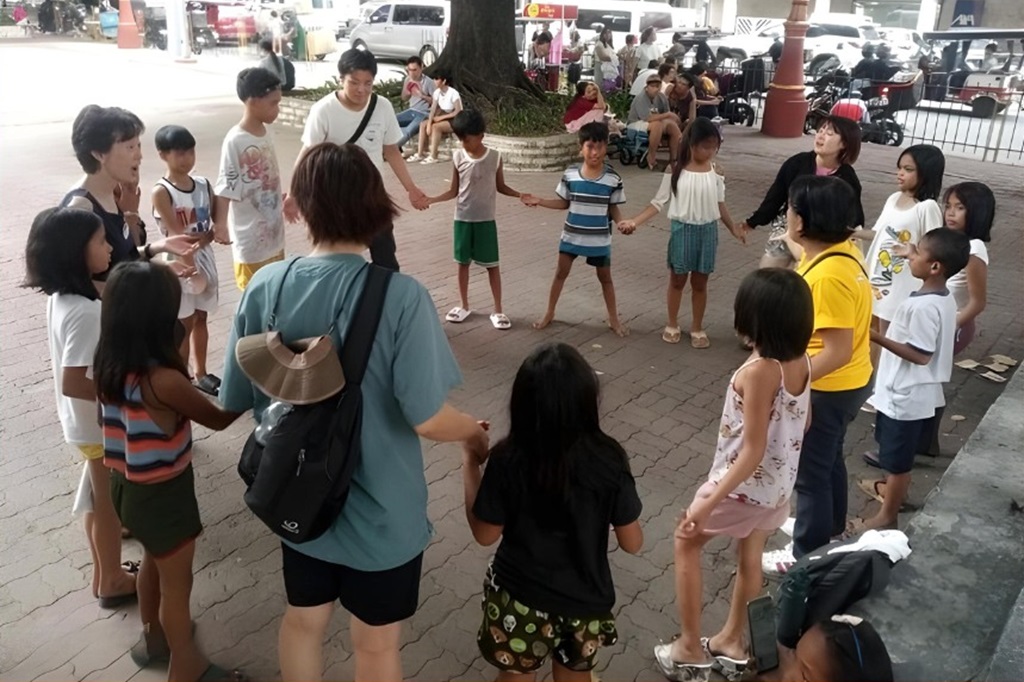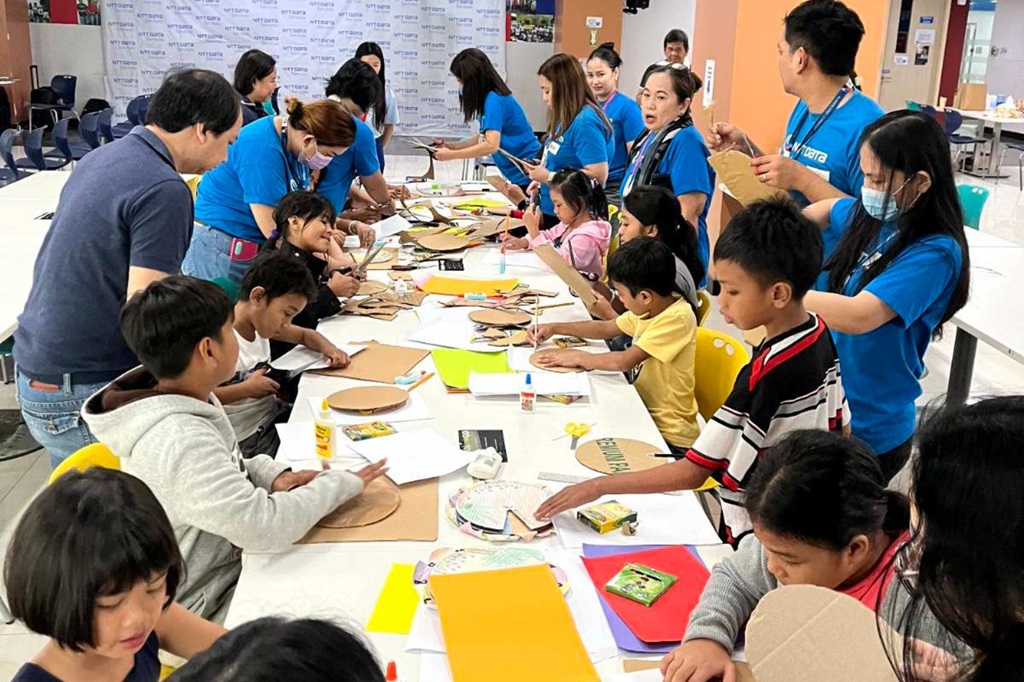Education is a fundamental right, yet many children face barriers that prevent them from fully participating in learning. An inclusive learning environment ensures that every student, regardless of their background, ability, or circumstances, has equal access to quality education. By fostering a culture of respect, adaptability, and collaboration, inclusive education creates opportunities for all learners to thrive.
This blog explores the importance of inclusive learning environments, their benefits, strategies for implementation, and how Childhope Philippines is championing inclusive education for street children through its KalyEskwela program.
What is an Inclusive Learning Environment?
An inclusive learning environment is a space where all students, regardless of their background, abilities, or learning styles, feel welcomed, valued, and supported. It is designed to foster equity by recognizing and accommodating diverse learning needs while promoting a sense of belonging. Unlike traditional classrooms that may follow rigid teaching methods, inclusive environments prioritize adaptability, cultural responsiveness, and student-centered approaches to education.
Inclusive learning environments employ strategies such as differentiated instruction, universal design for learning (UDL), and collaborative activities to ensure that every student has an equal opportunity to succeed. These classrooms also embrace diversity by integrating multicultural content, facilitating open discussions about inclusion, and encouraging students to appreciate different perspectives. Consequently, they create a strong foundation for both academic achievement and personal growth.
Related Article: Educational Technology and Its Transformative Role in Children’s Lives
Why an Inclusive Learning Environment Matters for Every Student
Inclusive learning environments do not only benefit students with special needs or marginalized backgrounds; they enhance the overall learning experience for everyone. By fostering an atmosphere of acceptance and mutual respect, these classrooms help students develop empathy, social awareness, and problem-solving skills.
A key advantage of inclusive education is its ability to break down barriers and reduce educational disparities. When students from different backgrounds learn together, they build relationships based on understanding rather than prejudice. This exposure prepares them to navigate the real world, where diversity is a natural and essential aspect of society.
Who Benefits from an Inclusive Learning Environment?
While all students gain valuable skills from inclusive education, certain groups experience profound benefits:
- Students with Disabilities – Inclusive classrooms accommodate students with physical, intellectual, and learning disabilities through personalized support and adaptive teaching methods.
- Culturally and Linguistically Diverse Students – Children from different cultural backgrounds feel more engaged when their heritage is represented and respected in the curriculum.
- Economically Disadvantaged Students – Low-income students thrive in environments that acknowledge their challenges and provide the necessary resources for their academic success.
- Gifted and Talented Students – By incorporating flexible teaching strategies, inclusive classrooms ensure that high-achieving students remain challenged and engaged.
- At-Risk Youth – Students facing social, emotional, or behavioral challenges benefit from an educational approach that prioritizes emotional well-being and support.
As organizations try to address the needs of these diverse groups, inclusive learning environments create a more equitable education system that benefits society as a whole.

Proven Strategies to Foster an Inclusive Learning Environment
Creating an inclusive learning environment requires intentional effort and strategic implementation. Educators can incorporate the following strategies to ensure that all students feel included and supported:
- Differentiated Instruction – Tailoring teaching methods to accommodate different learning styles ensures that every student can grasp the material in a way that suits them best.
- Universal Design for Learning (UDL) – This approach focuses on providing multiple means of engagement, representation, and expression to cater to diverse learners.
- Culturally Responsive Teaching – Incorporating diverse cultural perspectives into the curriculum helps students see themselves reflected in their education.
- Collaborative Learning – Encouraging teamwork and peer interactions fosters a sense of community and mutual respect among students.
- Flexible Assessment Methods – Offering various forms of assessments, such as presentations, projects, and discussions, ensures that students can demonstrate their understanding in ways that align with their strengths.
Practical Tips for Maintaining Inclusivity in Education
Sustaining an inclusive learning environment requires continuous effort. Here are some actionable steps educators can take:
- Create Safe Spaces. Establish classroom norms that promote respect, open communication, and inclusivity.
- Encourage Student Voice. Provide opportunities for students to share their perspectives and experiences in discussions and classroom activities.
- Implement Assistive Technology. Utilize tools like speech-to-text software, audiobooks, and screen readers to support students with diverse needs.
- Professional Development for Educators. Continuous training on inclusive teaching methods helps teachers stay informed and equipped to handle diverse classrooms.
- Engage Parents and the Community. Collaborating with families and community organizations strengthens the support system for students outside the classroom.
Related Article: The Power of Play-Based Learning: Transforming Early Childhood Education
KalyEskwela: Championing Inclusive Education for Street Children
One powerful example of inclusive education in action is Childhope Philippines’ KalyEskwela program, which brings education directly to children in street situations. Through mobile classrooms, the initiative provides alternative learning opportunities to children who lack access to traditional schooling.
The KalyEskwela program is designed to cater to the unique needs of street children by offering customized learning plans, psychosocial support, and life skills training. Educators and social workers work closely with students to identify their individual learning needs and provide flexible, student-centered instruction. This model ensures that no child is left behind, regardless of their circumstances.
Beyond academics, KalyEskwela fosters an environment where children feel safe, valued, and motivated to pursue their education. By addressing barriers such as poverty, lack of parental support, and social stigma, the program empowers street children to break the cycle of disadvantage and build a brighter future.

Join Childhope in Transforming Lives Through Education for Street Kids
Inclusive learning environments have the power to transform lives, especially for children who face systemic barriers to education. Childhope Philippines is committed to making quality education accessible to all, ensuring that every child has the opportunity to learn and thrive.
You can be part of this mission. By donating to Childhope Philippines, you help provide resources, teaching materials, and essential support for street children’s education. Your contribution directly impacts their future, giving them a chance to break free from the cycle of poverty through knowledge and skills.
Support inclusive education today. Donate now and help us create a world where every child has the right to learn, grow, and succeed.
